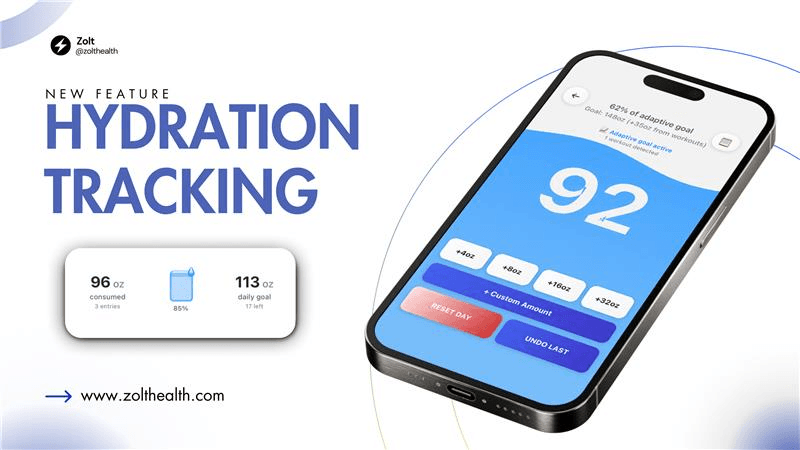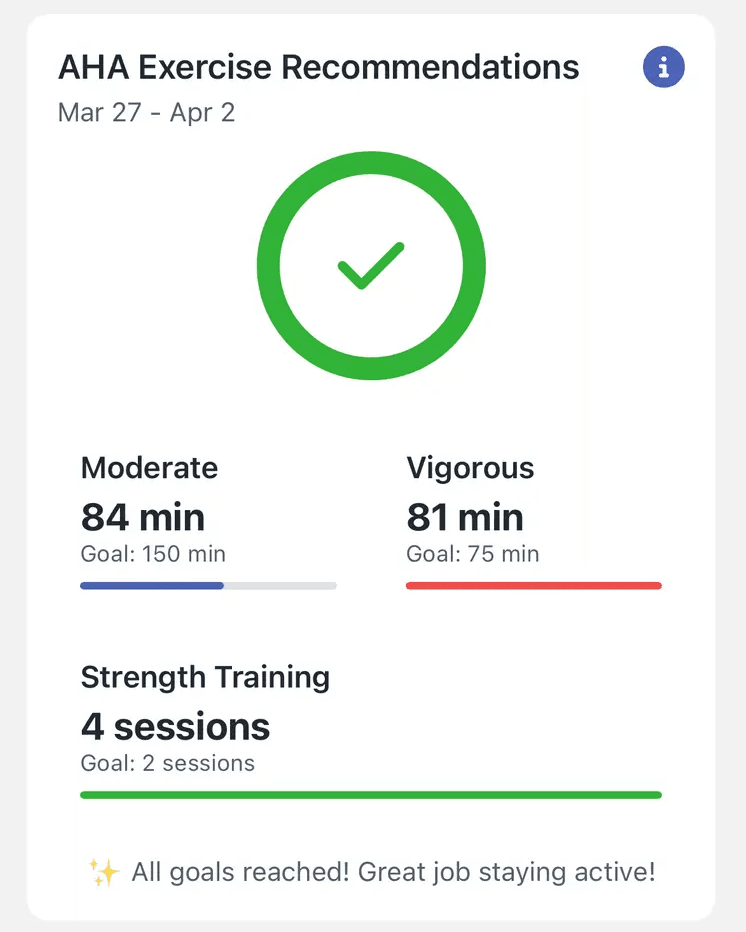Cardio Load and the TSB Model in Zolt
Understanding your body’s response to exercise is necessary for optimizing performance and preventing injury. Zolt makes this accessible through the Cardio Load feature, which works together with your Activity Score to provide a complete picture of your training status.

What is Cardio Load?
Cardio Load in Zolt is based on the scientifically-validated Training Stress Balance (TSB) model, a sophisticated approach to quantifying training load that helps you understand your body’s readiness for exercise. This approach aligns with Zolt’s overall scoring philosophy, making it easy to interpret alongside your other health metrics.
The TSB model, developed by sports scientists, operates on a simple but powerful principle: it tracks the balance between fitness and fatigue to determine your body’s current state. As the training platform TrainerRoad explains, “TSB is straightforward – it is the balance of Chronic and Acute Training Load. TSB = CTL – ATL.”
In simpler terms, Cardio Load helps answer a critical question: “Is my body ready for a challenging workout today, or do I need recovery?”
The Three Key Components of Cardio Load
Zolt’s Cardio Load feature tracks three essential metrics:
1. Fitness (Chronic Training Load or CTL)
This represents your body’s long-term adaptation to training, often described as your overall fitness level. According to TrainingPeaks, “Think of Chronic Training Load as a measure of your true fitness. It’s an ongoing average of your daily training load specifically looking at the last six weeks or 42 days of data points.”
In Zolt, this is calculated over a 42-day period, providing a comprehensive view of your cardiovascular fitness development.
2. Fatigue (Acute Training Load or ATL)
This measures the short-term fatigue accumulated from recent workouts. Science to Sport describes ATL as “your short term training load, normally during the last 7 days,” which effectively represents “your current fatigue state.”
Zolt calculates this over a 7-day period, helping you understand how much recent strain your body has experienced.
3. Form (Training Stress Balance or TSB)
This is the difference between your Fitness and Fatigue scores (TSB = Fitness – Fatigue). As Joe Friel explains in TrainingPeaks, Form is essentially “race readiness” and is calculated by “subtracting today’s Fatigue (Acute Training Load, or ATL) from today’s Fitness (Chronic Training Load, or CTL).”
A positive Form score indicates your body is well-recovered and ready for challenging workouts, while a negative score suggests accumulated fatigue and potential need for recovery. This works hand-in-hand with your Recovery Score to give you a complete picture of your body’s readiness state.
How Zolt Calculates Your Cardio Load
Zolt uses a sophisticated algorithm to calculate your Cardio Load based on heart rate data from your workouts:
The TRIMP Method
At the core of Zolt’s Cardio Load calculation is the Edwards TRIMP (Training Impulse) method, which quantifies workout intensity based on time spent in different heart rate zones. According to research on heart rate-based training methods, this method assigns a weighting factor to each zone.
This approach makes sure that high-intensity efforts contribute proportionally more to your training load than low-intensity activities.
Accumulated Load Tracking
These scores are then processed to calculate:
- Fitness (CTL): Using a 42-day exponentially weighted average
- Fatigue (ATL): Using a 7-day exponentially weighted average
- Form (TSB): By subtracting ATL from CTL
Understanding Your Cardio Load Status
Zolt breaks down your Form score into five meaningful categories that help you interpret your training status:
1. High Risk (TSB < -30)
This indicates extreme fatigue, significantly increasing injury risk. Zolt recommends 1-2 complete rest days, focusing on recovery activities, and getting enough sleep and good nutrition.
2. Fatigued (-30 to -10)
Your body is carrying elevated fatigue that requires attention. Zolt advises reducing training intensity temporarily and prioritizing recovery between sessions. Pay special attention to your sleep stages to make sure you’re getting enough deep and REM sleep for proper recovery.
3. Balanced (-10 to 5)
This represents a good equilibrium between training stress and recovery. Zolt suggests maintaining your current training load while monitoring for signs of fatigue.
4. Fresh (5 to 25)
Your body is well-recovered and ready for challenging workouts. This is an ideal time for high-intensity sessions or performance testing. This typically correlates with a high Recovery Score in Zolt.
5. Very Fresh (> 25)
You’re fully recovered with peak performance potential. While excellent for competition, Zolt notes that staying in this range too long might lead to detraining.
Why Cardio Load Matters
Understanding your Cardio Load provides several key benefits:
Injury Prevention
By monitoring your Form score, you can identify when your body is carrying excessive fatigue, reducing the risk of overtraining injuries.
Performance Optimization
As coach Joe Friel notes, keeping “TSB in the -10 to -30 range when the training is hard and focused is a very productive and healthy range” for most athletes during serious training periods. Zolt helps you maintain this optimal balance.
Recovery Management
The Cardio Load feature helps you determine when to push hard and when to prioritize recovery, maximizing training adaptation while minimizing burnout. Proper recovery is enhanced by good sleep consistency and reducing sleep debt.
Training Periodization
By tracking your metrics over time, you can effectively structure training cycles, including build phases and tapering periods before important events or competitions.
How Cardio Load Works With Other Zolt Features
Cardio Load doesn’t exist in isolation—it’s part of Zolt’s integrated approach to health tracking:
- It influences your Activity Score target, making it more dynamic and responsive to your current training status
- It works alongside your Recovery Score to provide a complete picture of your body’s current state
By tracking your Cardio Load in Zolt, you’re getting powerful insights that professional athletes have long used to optimize their training.

